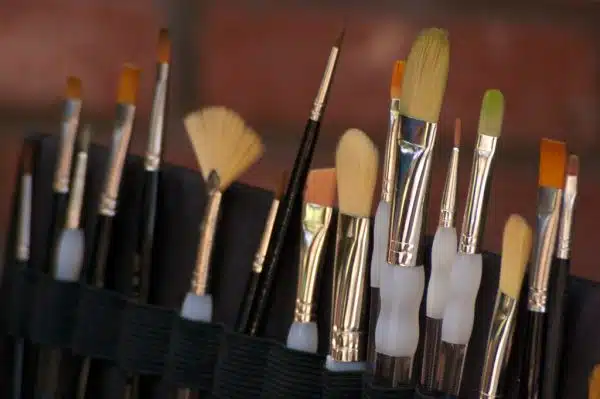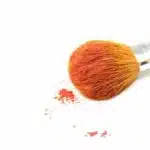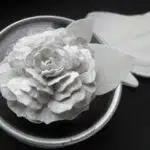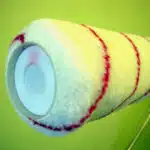Painting is a therapeutic activity that can help individuals express their creativity and emotions. However, the process of painting involves the use of paint brushes, which can accumulate dried paint over time if not cleaned properly. This can result in poor quality painting, reduced lifespan of the paint brushes, and wasted money on replacement brushes.
As a professional painter, it is essential to understand how to clean paint brushes effectively. This article will provide you with step-by-step instructions on how to clean different types of paint brushes and how to maintain them for extended use. By following these tips, you can save money on new brushes and ensure that your paintings are of high quality every time.
The Importance Of Properly Cleaning Paint Brushes
The importance of properly cleaning paint brushes cannot be overstated. Not only does it ensure a longer lifespan for your brushes, but it also maintains the quality of your paintwork. A clean brush means that you can achieve a smooth and even application, which is essential for producing professional-looking results.
Using quality cleaning materials is key to achieving a thorough cleaning job. Investing in high-quality solvents and cleaners will provide you with the best results and help keep your brushes in top condition. The benefits of using these products are numerous, and they extend beyond just maintaining the integrity of your brushes. By using proper cleaning materials, you are also reducing the risk of any potential damage to the bristles or handle.
Overall, taking care of your paintbrushes by properly cleaning them after each use is an essential part of being a painter. It may seem like a small step in the process, but it has significant benefits that will ultimately save you time, money, and frustration down the line. In the next section, we will explore what materials are necessary for efficient and effective brush cleaning.
Materials Needed For Cleaning Paint Brushes
The process of cleaning paint brushes requires a few materials to ensure that the brushes are thoroughly cleaned. The most important material needed is water, which is used to rinse off the paint from the brushes. Paint thinner or solvent can also be used to clean oil-based paints. However, it is important not to mix solvent with water when cleaning brushes.
Another essential material for cleaning paint brushes is soap or detergent. This helps to remove any remaining paint and dirt from the bristles of the brush. Additionally, a brush cleaner can be used for more stubborn stains and buildup on the brush. It is also recommended to have a bucket or container specifically designated for brush cleaning.
Understanding different brush cleaning techniques can help prolong the life of your paint brushes. Some basic techniques include gently rubbing and swishing the brush in soapy water, using a comb or wire brush to remove stubborn stains, and hanging the brushes upside down to dry after cleaning. Properly caring for your tools will ensure they last longer and work better for future projects.
Transitioning into preparing brushes for cleaning, it is important to note that removing as much excess paint as possible before starting the cleaning process will make it easier and quicker to clean your brushes thoroughly. This prevents any leftover paint from drying onto the bristles which can make it difficult or impossible to remove later on.
Preparing Brushes For Cleaning
Brush maintenance is an essential aspect of painting that every artist or painter should know. After completing a painting task, it’s crucial to prepare the brushes for cleaning. This process involves removing any excess paint from the brush bristles to make cleaning more manageable.
To prepare your brushes for cleaning, you need to follow specific techniques that will ensure their longevity and proper functioning. First, use a paper towel or cloth to wipe off any excess paint from the brush bristles. Next, rinse the brush under running water while squeezing out any remaining paint gently.
After preparing your brushes for cleaning, it’s essential to store them correctly. Brush storage techniques can vary depending on the type of paint and brush used. However, some general tips include keeping your brushes in a cool dry place and avoiding direct sunlight exposure. You can also store them in a container with bristle-side up or hang them upside down using hooks specifically designed for this purpose.
As an artist or painter, taking care of your tools is as important as creating magnificent artwork. Proper brush maintenance and storage techniques will ensure that your brushes remain in good condition and last longer. In the next section, we’ll discuss how to remove wet paint from brushes without damaging their bristles.
Removing Wet Paint From Brushes
After preparing your brushes for cleaning, it’s important to consider brush care and preserving the bristles. Taking proper care of your brushes will ensure their longevity and make future cleanings easier.
To preserve the bristles, start by using a gentle soap or brush cleaner that is designed specifically for paint brushes. Avoid using harsh chemicals or solvents as they can damage the bristles over time. Gently work the cleaner into the bristles, taking care not to bend them too much as this can cause damage as well.
Once you have cleaned your brushes, it’s important to store them properly. Never leave them soaking in water or with wet paint on them, as this can cause the bristles to become misshapen or damaged. Instead, gently reshape the bristles and lay them flat to dry before storing them in a well-ventilated area.
Transition: Now that you know how to properly care for your brushes after use, it’s time to tackle removing dried paint from your brushes.
Removing Dried Paint From Brushes
When paint dries on a brush, it can be difficult to remove. However, there are methods that can be used to effectively remove dried paint from brushes. Using solvents is one option that can be effective in removing dried paint. Solvents such as mineral spirits or turpentine can be applied to the brush and then wiped away with a cloth or paper towel.
Another method for removing dried paint from brushes is brush combing. This involves using a stiff-bristled brush or comb to gently scrape away the dried paint from the bristles of the brush. Brush combing should be done carefully, as too much force could damage the bristles of the brush.
When attempting to remove dried paint from brushes, it’s important to remember that prevention is key. Taking steps such as cleaning brushes immediately after use and using a brush cleaner can help prevent paint from drying on the bristles in the first place. By taking these preventative measures and using effective methods for removing dried paint, you can keep your brushes in good condition and extend their lifespan.
Moving forward into cleaning oil-based paint brushes, it’s important to note that this type of paint requires different cleaning methods than water-based paints.
Cleaning Oil-Based Paint Brushes
To clean oil-based paint brushes, it is important to use solvents that are specifically designed for the task. Solvents help break down the dried paint on the bristles and allow them to be easily removed. Mineral spirits or paint thinner are common solvents used for cleaning oil-based paint brushes. These solvents can be found at most hardware stores and should be handled with care as they are flammable.
After using a solvent, it is important to rinse the brush thoroughly with water. This ensures that any remaining paint residue is removed from the bristles. Once rinsed, gently pat dry the bristles with a clean cloth or paper towel. Avoid rubbing or squeezing too hard as this can damage the shape of the brush.
Finally, if you plan on reusing your oil-based paint brushes, store them in a safe place such as a brush holder or container with the bristles facing up to prevent bending or misshaping. It is also recommended to wrap them in paper towel to absorb any excess moisture and keep their shape intact.
Moving onto cleaning water-based paint brushes, there are different steps involved due to their different composition. While water can be used as a solvent for cleaning water-based paint brushes, there are other methods that may prove more effective in removing stubborn stains and residues from these types of brushes.
Cleaning Water-Based Paint Brushes
- Before attempting to clean water-based paint brushes, it is important to ensure that all paint is removed from the bristles.
- The most effective method of removing paint is to use a brush comb to carefully lift the paint away from the bristles.
- Once all of the paint has been removed, the brush can be cleaned by soaking it in warm, soapy water.
- After the brush has been thoroughly cleaned, it should be rinsed with clear water and gently patted dry with a clean cloth.
Removing Paint
Removing paint from water-based paint brushes is an essential step in maintaining their quality and prolonging their life. Proper techniques must be employed to ensure that all paint is removed from the brush’s bristles, leaving them clean and ready for use in future painting projects. One common mistake when removing paint is to rush the process, leading to incomplete cleaning of the brushes.
The first step in removing paint from water-based paint brushes is to rinse them thoroughly with warm water. This will help to remove most of the excess paint from the brush. Then, gently shake off any excess water and dab the brush on a paper towel or rag until it appears dry. Next, using a mild soap or detergent, work up a lather in your hand and then gently massage the bristles with your fingers. Do not use hot water as this may damage the brush’s bristles.
Another common mistake when removing paint is failing to remove all residual soap or detergent from the brush after washing it. To avoid this issue, rinse your brushes thoroughly under running water until you no longer see any soap suds coming off of them. Once you have rinsed them completely, blot dry with a paper towel or rag and reshape the bristles if needed before storing away.
In conclusion, removing paint from water-based paint brushes requires proper technique and patience. Common mistakes such as rushing through the process or failing to remove residual soap can lead to suboptimal results. Following these simple steps will keep your brushes clean and ready for use in future painting projects while also prolonging their lifespan!
Cleaning The Bristles
To keep water-based paint brushes in good condition, proper cleaning techniques must be employed. After removing excess paint from the brush using warm water and dabbing it dry with a paper towel or rag, the next step is to clean the bristles thoroughly. Using solvents can damage the brush’s bristles, so it is best to use mild soap or detergent.
When cleaning the bristles, avoid using hot water as this can also cause damage. Instead, apply some mild soap in your hand and work up a lather before gently massaging the bristles with your fingers. Rinse the brush under running water until there are no more soap suds coming off of it. Blot-dry with a paper towel or rag and reshape if necessary.
Brush cleaning techniques may vary depending on personal preference, but proper cleaning of water-based paint brushes is essential for maintaining their quality and prolonging their lifespan. By following these steps, you can ensure that your brushes are clean and ready for use in future painting projects while avoiding common mistakes such as rushing through the process or failing to remove residual soap. With patience and attention to detail, you can preserve your brushes’ quality and ensure that they serve you well for years to come.
Cleaning Acrylic Paint Brushes
Cleaning water-based paint brushes may seem easy, but there are important techniques to follow to ensure your brushes last longer and perform better. Imagine you are a chef cooking a delicious meal in your kitchen. Just as you would not use the same knife for cutting raw meat and vegetables, you should not use the same container of water for rinsing different colors of paint from your brushes. This is because it can cause cross-contamination and lead to muddy colors in future paintings.
When rinsing your water-based paint brushes, start by wiping excess paint off with a cloth or paper towel. Then, rinse the brush under warm running water until the water runs clear. For stubborn dried-on paint, try soaking the brush in an eco-friendly cleaning solution made from vinegar and baking soda for several hours before rinsing again.
To keep your brushes in top condition, it’s important to store them properly after cleaning. Once they are clean and dry, wrap them in paper or cloth and store them upright in a container so that the bristles do not bend or become misshapen over time. With these simple techniques and some care, you can extend the life of your water-based paint brushes and enjoy more successful painting experiences.
Next up: Cleaning Acrylic Paint Brushes – read on to learn how to clean natural bristle brushes!
Cleaning Natural Bristle Brushes
Natural bristle brushes require extra care during the cleaning process to maintain their softness and shape. After removing excess paint, the first step is to thoroughly wash the brush with warm water and soap. Avoid using hot water as it can cause the bristles to expand and lose their natural curve. Gently work the soap into the bristles using a circular motion until all paint residue is removed.
Brush conditioning is an essential step in maintaining natural bristle brushes. After washing, use a small amount of hair conditioner or specialized brush conditioner to restore the bristles’ softness and flexibility. Massage the conditioner into the bristles with your fingers and let it sit for a few minutes before rinsing it out with clean water. Brush restoration is also necessary for old or hardened brushes that have lost their shape. Soak them in vinegar for a few hours, then rinse them thoroughly before washing and conditioning.
Proper care of natural bristle brushes prolongs their life span and maintains their quality, making painting easier and more enjoyable. By following these steps, you can ensure your brushes stay in excellent condition for all your future painting projects.
Transition: Now that we have covered how to clean natural bristle brushes let’s move on to cleaning synthetic bristle brushes.
Cleaning Synthetic Bristle Brushes
When cleaning synthetic bristle brushes, it is important to determine the size of the brush and prepare the bristles accordingly. Soaking the brush in a mild detergent can help remove any dirt or debris, while scraping off any excess paint can further prepare the bristles. Washing the brush thoroughly and rinsing with warm water will further ensure the bristles are free of dirt and paint. Finally, the brush should be dried properly to ensure it is ready for future use.
Determining Brush Size
When it comes to cleaning synthetic bristle brushes, determining the brush size is an important factor to consider. Proper brush selection will depend on the type of painting project being undertaken and the level of detail required. A small round brush, for example, is ideal for intricate details while a flat brush is more suitable for larger areas.
Brush care should include both pre-cleaning and post-cleaning routines. Before using the brush, it should be rinsed with water to remove any loose fibers that may have been left behind during manufacturing. After use, the brush should be cleaned immediately by wiping off excess paint with a cloth or paper towel and then washing it with soap and water.
When determining the size of a synthetic bristle brush, it is important to consider how much paint will be applied to the surface being painted. A larger-sized brush would be more appropriate for larger surfaces as it can hold more paint and cover more area at once. However, if detailed work is needed, a smaller-sized brush would be more suitable as it can provide better precision in intricate areas. By selecting the right size of synthetic bristle brushes and practicing proper brush care techniques, painters can ensure their tools remain in good condition and produce optimal results every time they are used.
Preparing The Brush
Maintaining synthetic bristle brushes is essential to ensure their longevity and optimal performance. Apart from selecting the appropriate size of brush and cleaning it properly, preparing the brush before each use is crucial in maintaining its quality. Brush maintenance begins with pre-cleaning, which involves removing any loose fibers or debris left on the brush after manufacturing. This process prevents any foreign particles from mixing with the paint and affecting the final outcome.
Long term care for synthetic bristle brushes should also include proper preparation before painting. The brush needs to be wetted and dried thoroughly before being dipped in paint. This helps to prevent paint from drying out on the brush during use, which can cause stiffness and affect its performance over time. Additionally, gently combing through the bristles with a comb or your fingers can help straighten out any stray hairs and ensure an even application of paint.
Proper preparation of synthetic bristle brushes plays a significant role in ensuring their optimal performance during painting projects. Regularly maintaining brushes through both pre-cleaning and post-cleaning routines will keep them in good condition for long-term use. By incorporating these simple techniques into their practice, painters can ensure that their tools remain effective and produce professional results every time they are used.
Cleaning Foam Brushes
Transition: Now that we have covered the cleaning of synthetic bristle brushes, let us move on to foam brushes. Foam brushes are an excellent alternative for those who do not want to use natural or synthetic bristles.
Foam brush alternatives include using sponges or even a piece of cloth. These options are great for applying paint in tight spaces or when you need a more controlled stroke. However, foam brushes are inexpensive and can be reused many times if taken care of properly.
To reuse foam brushes, be sure to clean them thoroughly after each use. Follow the same steps as cleaning synthetic bristle brushes, but make sure not to use too much water as it can cause the foam to deteriorate. Once cleaned, store them in a dry place until their next use.
Transition: Properly drying and storing paint brushes is just as important as cleaning them.
Drying And Storing Paint Brushes
After cleaning your paint brushes, it’s important to properly dry and store them to prevent damage and ensure their longevity. Improper storage can cause the bristles to deform or lose their shape, rendering the brush useless for future use.
To avoid this, first remove any excess water from the bristles by gently squeezing them with a clean cloth or paper towel. Then, reshape the bristles to their original form using your fingers or a comb specifically designed for brush maintenance. It’s best to store brushes upright in a container that allows air circulation, such as a cup or jar with holes in the bottom.
Proper brush storage can also include covering the bristles with a protective cap or wrapping them in paper to prevent dust and debris from settling on them. Additionally, keeping brushes out of direct sunlight and away from extreme temperatures can further prevent damage. By following these tips for preventing brush damage, you can ensure that your paint brushes are always ready for use when you need them.
Next up: maintaining paint brushes for extended use…
Maintaining Paint Brushes For Extended Use
Like a musician who takes care of their instrument, a painter must also take care of their brushes. Brush maintenance is essential for extended use and to ensure that the brushes work at their best. Proper brush care can help you avoid having to constantly replace your tools, saving you money in the long run.
To maintain paint brushes, it’s important to clean them thoroughly after each use. The paint can dry and harden on the bristles, making it difficult to remove. Start by wiping off any excess paint from the brush with a cloth or paper towel. Then rinse the brush under running water and use mild soap to gently massage out any remaining paint left on the bristles.
Once you’ve cleaned your brushes, make sure they’re completely dry before storing them away. Avoid leaving your brushes standing upright in water as this will cause them to become misshapen over time. Instead, lay them flat or hang them upside down so they can air dry naturally. Proper brush maintenance is key to keeping your tools in top condition for years to come.
As with any tool, even with proper cleaning and storage techniques, issues may arise when maintaining paint brushes. Troubleshooting common paint brush cleaning issues such as dried-on paint or frayed bristles can be frustrating but there are solutions available. By identifying these issues early and taking necessary steps to resolve them, you can ensure that your brushes continue to perform at their best and enable you to create beautiful works of art effortlessly.
Troubleshooting Common Paint Brush Cleaning Issues
One of the most common issues that painters encounter when cleaning their brushes is brush stiffness. This can be caused by several factors, such as using the wrong cleaning solution or not cleaning the brush thoroughly enough. To troubleshoot this issue, you can try soaking the brush in warm water mixed with a small amount of fabric softener for a few hours. If this doesn’t work, you may need to use a specialized brush cleaner or take the brush to a professional cleaner.
Another issue that painters may face when cleaning their brushes is fraying. This can happen if the bristles are too long or if they have been damaged during use. To prevent this issue, make sure to trim any loose bristles with scissors before washing your brushes. Additionally, avoid using your brushes on rough surfaces or applying too much pressure while painting.
Overall, proper brush maintenance is essential for preserving the quality and lifespan of your painting tools. By troubleshooting common issues such as stiffness and fraying, you can ensure that your brushes remain in good condition and continue to provide excellent results. In the next section, we’ll discuss some tips for avoiding paint build-up on brushes and keeping them clean between uses.
Tips For Avoiding Paint Build-Up On Brushes
After troubleshooting common paint brush cleaning issues, it is important to focus on preventing build up in the first place. Proper brush care techniques can help keep your brushes in good condition and prevent them from becoming clogged with dry paint. One of the most important things you can do is to clean your brushes thoroughly after each use.
To start, gently remove as much excess paint from the brush as possible by wiping it on a paper towel or rag. Then, rinse the brush under warm running water, using your fingers to work out any remaining paint. Be sure to get all the way down into the bristles and continue rinsing until the water runs clear. Finally, gently squeeze out any excess water and reshape the bristles before setting the brush aside to dry.
Another important technique is to use a conditioner for your brushes. This will help keep them soft and pliable, preventing stiffening or breakage over time. Simply wet your brush with water, rub a small amount of conditioner into the bristles, then rinse thoroughly and let dry completely before storing.
By incorporating these simple brush care techniques into your painting routine, you can help ensure that your brushes stay in great shape for years to come. Not only will this save you money in replacing worn-out brushes, but it will also make painting more enjoyable as you’ll always have a high-quality tool at hand.
Conclusion
Properly cleaning paint brushes is essential for maintaining their longevity and quality. Neglecting to clean your brushes can result in a build-up of dried paint, which can lead to bristle damage and decreased performance. To ensure maximum use out of your brushes, follow these steps:
Start by gathering the necessary materials: paper towels, a container of water, mild soap or brush cleaner, and a wire brush. Before beginning the cleaning process, wipe excess wet paint from the brush onto a paper towel. For dried paint on brushes, soak them in warm soapy water before using the wire brush to remove any remaining paint particles.
Once the brushes are clean, gently shake off any excess water and hang them upside down to dry completely. Finally, store your brushes in a cool dry place away from direct sunlight.
Maintaining your paintbrushes takes effort but it’s worth it to save money in the long run and improve the quality of your work. Like watering plants holds importance for their growth similarly cleaning our tools hold equal value for better output. With continued practice and consistent care, you’ll be able to maintain healthy brushes that provide optimal results every time you use them. The process may seem tedious at first but once you get into the habit of regularly cleaning and storing your brushes properly, it will become second nature – like brushing your teeth before bed.
Image Credits
- “Paint Brushes Close-Up” by Tech109 (featured)





























